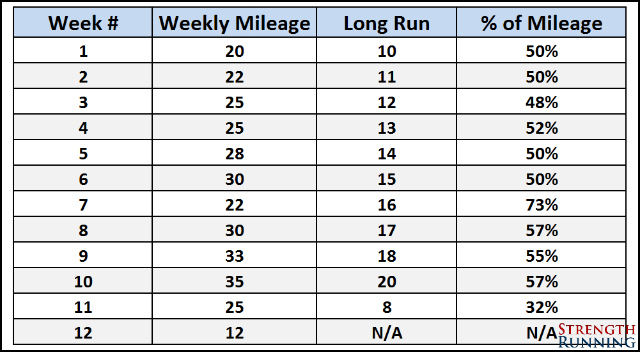Why are there so many “rules” in the running world? There’s the 10% Rule, the 80/20 Rule, and the rule that you should never wear shorts over tights.
Some of these are ironclad (wear your tights like a man!) while others are simply guidelines. They can be bent – and sometimes, even broken.
There’s another “rule” floating around that has to do with the distance of long runs.
In researching this article, I found many suggestions for how long this workout should be relative to your weekly mileage:
- 20-30% of your weekly mileage
- 20% (any more is too aggressive)
- 25% is “way too high”
- 35% of weekly mileage
- A LR should be no more than 50% of weekly mileage
There seems to be a general consensus that the length of your long run should be around 20-30% of weekly mileage, with some estimates even higher.
But is this rule an actual rule? Or is it more like a guideline that can be bent, broken, or shattered?
How to Plan Your Long Runs
As I’m sure you’ve guessed by now, the answer is a hybrid with many shades of grey.
Ideally, long runs should be somewhere around 20-30% of weekly volume. But this “rule” gets demolished when we consider the many outlier scenarios that skew these percentages.
Let’s dive into episode 21 of Q&A with Coach for the details:
Show Notes:
0:35 – Should long runs be a certain percentage of your total weekly mileage?
1:25 – When this “rule” breaks down
2:25 – Why the 10% Rule (for increasing weekly mileage) is incomplete
3:35 – What to focus on instead of percentages
3:50 – How to increase your long run
See, running is as much art as it is science. Rules can be broken. Liberties can be taken.
As you can tell from the tables below, the percentages can vary widely but still be considered a solid progression of long run distances.
In this example, here’s a 12-week progression of long runs for the marathon. This build-up is for a beginner runner:

Here we have a long run progression for an intermediate marathoner:

The stark difference is that the beginner’s schedule is more aggressive! Why? Because they’re unable to run higher mileage but they still need to run a significant distance for their long run.
Beginners must be very careful when training for longer races. If you’re not ready to do the training, then you’re not ready to run the race.
You can read more about this in the post When are you ready to run a marathon?
Most importantly, remember that the big picture of your training is more important than what percentage of your weekly mileage your long run occupies.
Instead, focus on:
- Is the overall plan of my entire season intelligent (use our Season Planner worksheet to help)?
- Am I ready to even begin training for the race I’d like to run?
- Do I listen to my body and back off when needed?
- Am I running smart workouts, getting stronger, and emphasizing injury prevention?
If the answer is yes to these questions, you can stop worrying if your LR distance is 18% or 49% of your weekly mileage – and focus on enjoying your training.